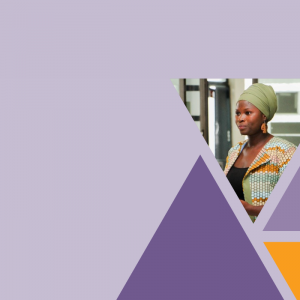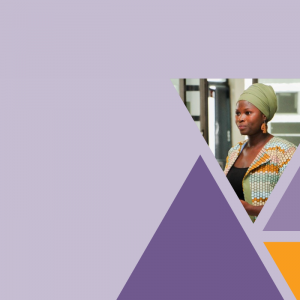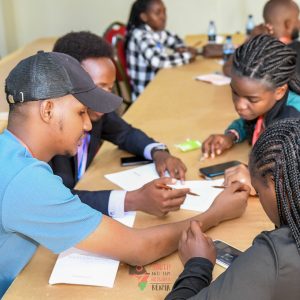FGC in Iran
The practice of FGC in Iran has been happening for generations. Despite this, there is a lack of comprehensive research publications on the subject, beyond small scale university theses and one recent publication noted in our country page here. European raised anthropologist Kameel Ahmady felt compelled to challenge the secrecy that surrounds the practice and returned to his native Iranian Kurdistan to uncover more about FGC in Iran. He began his study at home, and discovered that FGC had both historical roots and contemporary relevance amongst his family and friends. The whole paper can be found here.
In order to illustrate his initial revelations, he created a short documentary ‘In the name of tradition’, which presented a series of interviews, with both women and men who voiced their experiences and opinions on the practice. The film gave impetus for further research – Ahmady intended to uncover the ‘secret pockets’ where FGC is practiced in Iran, in order to raise awareness of the tradition nationally and globally.
He attributed the invisibility surrounding FGC to a severe lack of data, and therefore devised and implemented the first ever country wide data-collection project using a model similar to the Demographic Health Survey (DHS) using UNICEF style standardised questionnaires. The ‘fact finding mission’ spanned a 10 year period from 2005 to 2015, and adopted a continuously developing methodology. His approach was a first for Iran in that the research was large scale, stretching over 200 villages and reaching 4000 participants through local sources. Alongside this, the research aimed to identify whether men play a role in the perpetuation of the practice by ensuring 25% of participants from each province were male. The research findings showed a continued commitment to practicing FGC. This motivated Ahmady to pioneer a pilot project to raise awareness on the negative implications of the practice, with a hope to challenge cultural norms and change social attitudes towards FGC in Iran.
Findings
Findings identified that FGC was and continues to be practised in four provinces in the Northwest and South of Iran, including West Azabaijan, Kurdistan, Kermanshah and Hormozgan. Regional and provincial disparities are vast, but Hormozgan province has the highest prevalence rates reaching up to 60%.
Justification for the practice is most commonly bound to religion. Ahmady established that there is potentially a lack of government support for national efforts to reduce FGC as the Shi’a Government feels a lack of duty since the practice is predominantly performed by Sunni Muslims. This being said, the practice of FGC does not always correlate with provinces that have significant populations of Sunni Muslims, for example Sistan and Baluchistan are thought to be FGC free.
Throughout the report Ahmady loosely categorises the differentiating factors aiding the decreasing prevalence rates of FGC under matters pertaining to “modernity”. He identifies education, poverty, religion and age as the key factors. Where data was disaggregated by age there were large discrepancies, in Javanrood, West Azerbaijan the prevalence rate of FGC of girls aged 15 to 29 was 9% in stark contrast to 41% prevalence rate amongst women in the older age bracket of 30 to 49. He stresses that younger generations show a considerable lack of interest in religion alongside an increased trend in rural to urban migration – both factors work to reduce the pressure for girls to be cut.
Efforts to detect a male perspective on FGC resulted in the realisation that men were often uninvolved in the practice and held limited interest or knowledge on the topic. Women, on the other hand, were clearly identified as key influencers in the continuation of the tradition, taking on the role of practitioner. However, female perspectives tended to juxtapose their male counterparts, women often stated that their involvement was rooted in the ‘silent pressure of patriarchy’.
The ‘sensitisation of men’ towards FGC was key to the pilot projects’ success launched in 2010, which aimed to involve all members of the community, especially clerics and religious leaders who could issue fatwas against FGC. Ahmady recalls that ‘FGM was a ritual engraved in the souls of the local people’, and so developed low profile interventions that were participatory, culturally sensitive and holistic in nature to initiate grassroots abandonment of the practice following a human rights framework. Findings from the pilot projects solidified previous outcomes; that FGC was widespread in some areas and falling in others.
Conclusion
Worldwide figures show that the prevalence rates of FGC is declining in more than half of the countries studied (UNICEF, 2013). Overall, Iranian statistics can be aligned with these global figures, as prevalence rates of FGC in all four provinces studied are declining per annum. Despite this, prevalence rates remain high in ‘secret pockets’ throughout the country – acknowledgment of the practice is extremely limited and the tradition silenced. Government recognition of the practice is vital to its eventual elimination, however devising laws and signing treaties is insufficient legislation against the practice. Ahmady suggests that grassroots community mobilisation could generate a pivotal movement against FGC. By involving a wide range of stakeholders from religious leaders to the general public, the community can work together to lift the silence around the practice and bring a permanent end to FGC in Iran.
Ahmady’s approaches are harmonious with Orchid Project’s mission to see a future free from FGC, involving the entire community to help achieve this goal.
To read more on FGM/C in Iran, you can visit Orchid Project’s Iran Country page here. And read Emma Batha’s article here.






